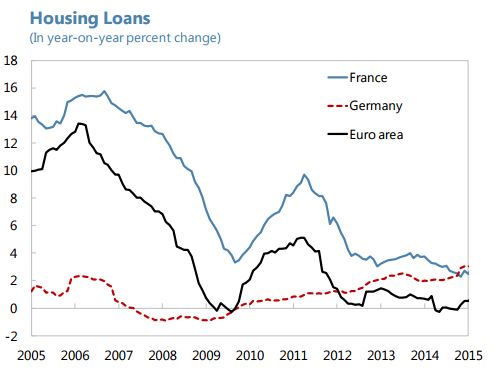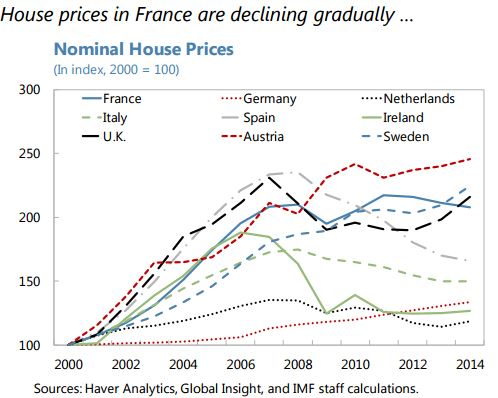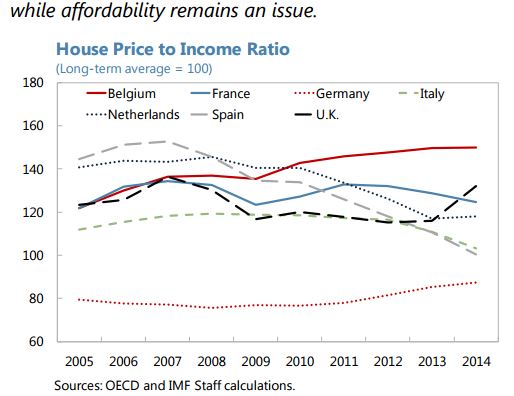Friday, July 10, 2015
Housing Market in France
Moreover, the report says that “More could be done to alleviate structural rigidities in the housing market. Residential construction has fallen by 14 percent, and real house prices by 11 percent, since the peak in 2007. While this decline is partly cyclical, a succession of laws introducing regulatory and tax changes may also have contributed. Another long-standing factor affecting the market is the extensive system of housing subsidies, which include rental cash assistance (received by 44 percent of tenants), subsidized mortgage rates for households, and fiscal breaks for providers (including of social housing), together amounting to 1.9 percent of GDP in 2013. While these were aimed at making housing more affordable, studies have found that rental assistance may contribute to rising rents. Staff recommended reviewing the functioning of the housing market, with a view to alleviating constraints on the supply of affordable housing and improving the targeting of benefits.”
A separate IMF note on the Financial Sector, Housing Prices and Private Balance Sheets notes the following: “House prices have continued to decline gently since their peak in 2011, but affordability metrics remain above long-run averages. House price overvaluation is currently estimated at around 10–15 percent. Nevertheless, household debt appears manageable, at around 10–15 percent.
Posted by at 6:11 PM
Labels: Global Housing Watch
Subscribe to: Posts


